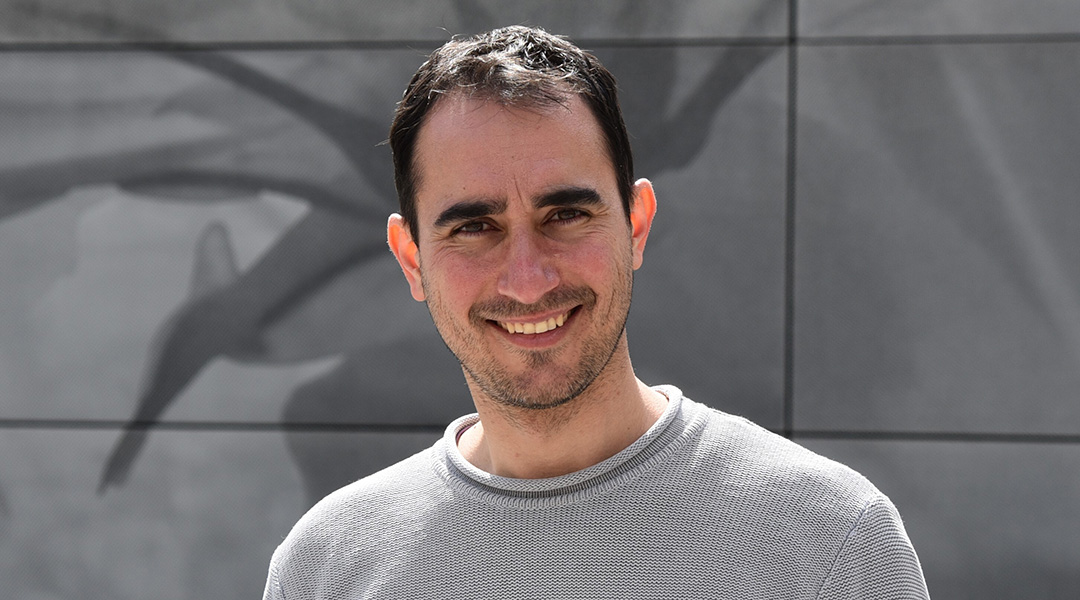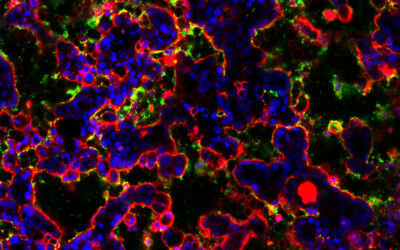Although fifth-generation (5G) wireless networks have only been available for the past five years or so, 6G networks are already fast being dreamed up. The unprecedented technology –– anticipated to launch around 2030 –– will not only deliver much faster data speeds than 5G but will also integrate artificial intelligence and quantum technologies to provide low latency and merge the human, physical, and digital realms of experience.
One of the researchers leading the 6G effort in Europe is Riccardo Bassoli, whose focus is the design and integration of quantum computing, communication, and sensing technologies for this new generation of networks. He heads the Quantum Communications Networks research group at TU Dresden in Germany, collaborates with various companies like Deutsche Telekom and aconnic, and is involved in the EU flagship projects Hexa-X-II and QIA (Quantum Internet Alliance).
Although the details are still fuzzy, in a recent interview with us, he hinted at what a 6G-connected world might look like and discussed the practical challenges surrounding the implementation of the technology.
What is your area of expertise?
When I started my professorship at TU Dresden, the idea was to imagine the role of quantum technologies in enabling next-generation networks — let’s call them 6G. Can quantum computing, quantum sensing, or quantum communication technologies play a role in the networks that we will have between 2030 and 2040? This was the main question that drove my professorship from the beginning. My research focuses specifically on achieving low latency in communication networks while also satisfying the requirements of sustainability and trustworthiness that 6G has established.
What are quantum communications, and how do they differ from classical communications?
In classical communications, you mainly map the bits of information into electromagnetic waves (or sound waves if you think about underwater communication). In quantum communications and quantum computing, you map information into the properties of atomic and subatomic systems. So, for example, you take the properties of a particle or the electron spin or energy levels in an atom.
How far along is 6G at this point in time?
Normally, every generation of mobile wireless network (cellular network) takes a decade [to develop]. 6G will be deployed between 2030 and 2040. At the moment, the amount of qubits [quantum bits] that we have available in quantum computers is limited, but in the next decade, we imagine that quantum computers will have a few more qubits available. It’s important to investigate the readiness that quantum computing technologies can reach in 5 to 10 years, to understand the potential applicability.
How will 6G improve upon 5G?
For the first time, 5G introduced the paradigm of virtualization in communication networks. The idea is that hardware functionalities can also be abstracted and implemented as software modules, which can run at any computing network node (e.g., a server). This is the cloud/edge computing vision. In 6G, the vision is to abstract the hardware infrastructure completely into a so-called ‘software continuum’ that can be dynamically and adaptively managed by the control plane of the network. This network softwarization is what made computing a key paradigm in communication networks [in-network computing].
Another pillar is in-network intelligence. This means to apply machine learning or artificial intelligence not only as a service but also for network management and operations. Next, semantic, post-Shannon and goal‑oriented communications will support 6G for remodeling communication paradigms, to achieve a more efficient use of the communication resources.
Finally, 6G will also be a “network of networks”. This can be a bit more technical. The vision of 6G aims at realizing an ’ecosystem’ of networks, which makes interworking terrestrial wireless and wired technologies of different kinds with non-terrestrial networks (e.g., satellites, drones, unmanned aerial vehicles, etc.). This will enable 6G to connect seamlessly any place on Earth.
Which 6G capability are you most excited about?
The convergence of the human sensorial experience, the environment, and “virtual worlds” into a mixed “reality” (e.g., for enabling human telepresence). Next, the remote control of robots and machines to perform specific collaborative tasks seamlessly, which will significantly advance several fields in industry, health, and education.
Which fields do you think will be the most dramatically affected by 6G technology?
6G will enhance the work in industry significantly. One single worker will be able to perform different tasks in collaboration with different kinds of robots and machines, reducing the physical stress on the worker. Next, in democratizing skills and making health more efficient, effective, and affordable. These use-cases are some of the ones we consider in the Excellence Cluster Center for Tactile Internet with Human-in-the-Loop (CeTI) and in the 6G-life research hub of Germany. Here is where the Tactile Internet plays a key role.
What is the Tactile Internet? Will it be a 6G capability?
The idea that started during the last decade with 5G was, can we add control into the network? Can a human control a remote robot? In order to do that, you cannot only rely on audiovisual information, but you also need the transmission of the sense of touch. You can imagine this while performing a remote surgery or controlling a robot in a factory. You cannot operate without having the feeling feedback of touch. This will definitely be a fundamental pillar for the metaverse, in which real objects will interact with virtual objects seamlessly in a mixed reality.
What are the main challenges facing the implementation of 6G technology?
There are many. 6G is an ecosystem of networks and technologies. You have to ensure that all these technologies seamlessly integrate with each other to provide the end-to-end performances that are required by the services and the verticals.
One of the main bottlenecks is latency. If you imagine, for example, the requirements of the Tactile Internet, in which low-latency communications require an end-to-end delay of 1 to 10 milliseconds, you have to ensure that the sum of the delays given by each technology and each node of the network satisfies this range of values. Next, this latency objective has to be achieved concurrently with energy efficiency, trustworthiness, massive connectivity, and high data transmissions. This is the critical challenge.
What are the practical challenges of integrating quantum computing with wireless networks?
First of all, at the moment, we don’t have a standard technology. For example, “classical” computers are somehow standardized. They use specific technologies that already work in a specific way. We could extend this also to communication technologies. In quantum computing and communications, we don’t know if these technologies will be the ones applied in the future, because we are still investigating their performance, capabilities, and tradeoffs.
To give an example, we see various quantum computers based on completely different technologies like superconducting, photonics, trapped ions, NV [nitrogen-vacancy] centers, etc. We don’t know yet which technology will be applied because we don’t know which technology will be the best for satisfying the requirements of future communication networks. We have to investigate all of them to see their benefits and limits. This is one of the main objectives of our project QUARKS, in collaboration with our colleagues at TU Munich, funded by German Federal Ministry of Education and Research.
Are there any leading candidates at this point?
It’s still an ongoing work. We can’t discriminate one technology from the other one at the moment.
Quantum computers are not known to be very energy efficient at the moment. How can the energy efficiency and sustainability of quantum computers be enhanced?
One of the key performance indicators in 6G is energy efficiency. Sometimes, solutions are proposed to using some quantum technologies that target one of the 6G metrics but not simultaneously all of them. In 6G, we have to concurrently satisfy different metrics that are sometimes causing critical tradeoffs. For example, if you want to ensure high security and trustworthiness in the network, the security has a computing load and a communication load, which also require more energy.
An important challenge in applying quantum computing in networks is to calculate the energy usage of the various platforms in a transparent and complete way, considering the actual energy related to the tradeoffs with computing time, reliability, and amount of actual computational qubits that you can provide. Currently, energy-related debates are not so frequent in quantum computing.
On the other hand, what we try to do in my group is the evaluation of quantum computing, considering all the performance metrics of 6G. From the engineering perspective, these are important questions that we have to answer. The success in engineering one technology over another is not only about the quality of the technology but also its actual applicability and scalability out of the lab.
Will quantum computing be advanced enough to be integrated into 6G networks by 2030?
As it was for the previous generations, the diffusion of 6G into society will start from 2030 and grow in the course of the next decade. Making the network connectivity available everywhere will also require investments by different industrial players in the various countries.
I think the integration of quantum computing in 6G will become more impactful to the wider community in the second half of the decade, maybe from 2035 to 2040. That will depend a lot on the advancements in research, industry, and standardization for these technologies. The role of quantum computing might be to accelerate the hardware of current computing centers. Nevertheless, the advance lies also in the proof of an actual quantum advantage that considers not only computing time.
If we achieve our objective of reaching low latency with the help of quantum computing, I guess that industry, the educational system, and healthcare systems will be the first to benefit.

















